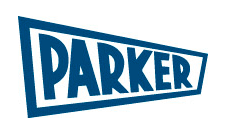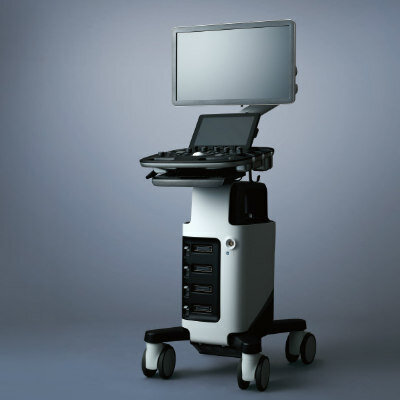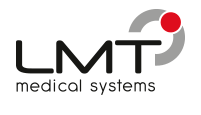AI Based Lesion-Detection Software Detects Incidental Lung Nodules on Chest X-Rays
|
By MedImaging International staff writers Posted on 17 Nov 2023 |

In the field of radiology, artificial intelligence (AI) has made significant strides, particularly in the development of AI-based lesion-detection software for chest X-rays. These advancements have proven effective in real-world settings, including emergency departments, lung cancer screenings, and respiratory clinics. However, the impact of AI in identifying unexpected lung nodules in patients not initially presenting with chest-related issues has been less explored. Now, a new study has demonstrated that an AI-based lesion-detection software can be instrumental in daily medical practice, especially for spotting clinically significant incidental lung nodules in chest X-rays.
A group of researchers at Yonsei University College of Medicine (Gyeonggi-do, South Korea) used Insight CXR, v3 from Lunit (Seoul, South Korea) to evaluate how often clinically significant lung nodules were detected unexpectedly on chest X-rays and whether coexisting findings can aid in differential diagnoses. This software is intended to assist in the interpretation of both posterior-anterior and anterior-posterior chest X-rays. It is capable of detecting various lesions such as nodules, pneumothorax, consolidation, atelectasis, fibrosis, cardiomegaly, pleural effusion, and pneumoperitoneum. When a patient has a chest X-ray, the software automatically processes the image and adds a secondary file to the original image in the hospital’s Picture Archiving and Communication System (PACS). Clinicians can then consult the AI analysis, which is presented with a contour map, abbreviations, and an abnormality score.
In their study, the team reviewed the imaging results of 14,563 patients who had initial chest X-rays at outpatient clinics. Three radiologists classified nodules into four categories: malignancy (group A), active inflammation or infection requiring treatment (group B), postinflammatory sequelae (group C), and other conditions (group D). The software identified lesions when its abnormality score was above 15%. The findings revealed that the AI software unexpectedly detected lung nodules in 152 patients (1%). Of these, 72 patients were excluded due to lack of follow-up images, and seven were excluded because they did not receive a conclusive clinical diagnosis.
In the final analysis of the remaining 73 patients, the false positive rate was found to be 30.1%. The breakdown showed that 11% had malignancy, 6.9% had active inflammation, 49.3% had postinflammatory sequelae, and 2.7% fell into other categories. This suggested that about 20.6% of incidental lung nodules in groups A, B, and D required further evaluation or treatment. The researchers acknowledged that their study did not provide comprehensive data on the detection and management of lung nodules when using AI-based software. This was partly because clinicians in their hospital had the discretion to consult AI results at their convenience, making it challenging to determine the exact influence of AI on clinical decision-making. Nevertheless, the team plans to further investigate these aspects in future research.
“Our results showed that lung nodules were detected unexpectedly by AI in approximately 1% of initial [chest X-rays], and approximately 70% of these cases were true positive nodules, while 20.5% needed clinical management,” noted lead author Shin Hye Hwang, MD.
Related Links:
Yonsei University College of Medicine
Lunit
Latest Radiography News
- Novel Breast Imaging System Proves As Effective As Mammography
- AI Assistance Improves Breast-Cancer Screening by Reducing False Positives
- AI Could Boost Clinical Adoption of Chest DDR
- 3D Mammography Almost Halves Breast Cancer Incidence between Two Screening Tests
- AI Model Predicts 5-Year Breast Cancer Risk from Mammograms
- Deep Learning Framework Detects Fractures in X-Ray Images With 99% Accuracy
- Direct AI-Based Medical X-Ray Imaging System a Paradigm-Shift from Conventional DR and CT
- Chest X-Ray AI Solution Automatically Identifies, Categorizes and Highlights Suspicious Areas
- AI Diagnoses Wrist Fractures As Well As Radiologists
- Annual Mammography Beginning At 40 Cuts Breast Cancer Mortality By 42%
- 3D Human GPS Powered By Light Paves Way for Radiation-Free Minimally-Invasive Surgery
- Novel AI Technology to Revolutionize Cancer Detection in Dense Breasts
- AI Solution Provides Radiologists with 'Second Pair' Of Eyes to Detect Breast Cancers
- AI Helps General Radiologists Achieve Specialist-Level Performance in Interpreting Mammograms
- Novel Imaging Technique Could Transform Breast Cancer Detection
- Computer Program Combines AI and Heat-Imaging Technology for Early Breast Cancer Detection
Channels
MRI
view channel
PET/MRI Improves Diagnostic Accuracy for Prostate Cancer Patients
The Prostate Imaging Reporting and Data System (PI-RADS) is a five-point scale to assess potential prostate cancer in MR images. PI-RADS category 3 which offers an unclear suggestion of clinically significant... Read more
Next Generation MR-Guided Focused Ultrasound Ushers In Future of Incisionless Neurosurgery
Essential tremor, often called familial, idiopathic, or benign tremor, leads to uncontrollable shaking that significantly affects a person’s life. When traditional medications do not alleviate symptoms,... Read more
Two-Part MRI Scan Detects Prostate Cancer More Quickly without Compromising Diagnostic Quality
Prostate cancer ranks as the most prevalent cancer among men. Over the last decade, the introduction of MRI scans has significantly transformed the diagnosis process, marking the most substantial advancement... Read moreUltrasound
view channel
Deep Learning Advances Super-Resolution Ultrasound Imaging
Ultrasound localization microscopy (ULM) is an advanced imaging technique that offers high-resolution visualization of microvascular structures. It employs microbubbles, FDA-approved contrast agents, injected... Read more
Novel Ultrasound-Launched Targeted Nanoparticle Eliminates Biofilm and Bacterial Infection
Biofilms, formed by bacteria aggregating into dense communities for protection against harsh environmental conditions, are a significant contributor to various infectious diseases. Biofilms frequently... Read moreNuclear Medicine
view channel
New SPECT/CT Technique Could Change Imaging Practices and Increase Patient Access
The development of lead-212 (212Pb)-PSMA–based targeted alpha therapy (TAT) is garnering significant interest in treating patients with metastatic castration-resistant prostate cancer. The imaging of 212Pb,... Read moreNew Radiotheranostic System Detects and Treats Ovarian Cancer Noninvasively
Ovarian cancer is the most lethal gynecological cancer, with less than a 30% five-year survival rate for those diagnosed in late stages. Despite surgery and platinum-based chemotherapy being the standard... Read more
AI System Automatically and Reliably Detects Cardiac Amyloidosis Using Scintigraphy Imaging
Cardiac amyloidosis, a condition characterized by the buildup of abnormal protein deposits (amyloids) in the heart muscle, severely affects heart function and can lead to heart failure or death without... Read moreGeneral/Advanced Imaging
view channel
New AI Method Captures Uncertainty in Medical Images
In the field of biomedicine, segmentation is the process of annotating pixels from an important structure in medical images, such as organs or cells. Artificial Intelligence (AI) models are utilized to... Read more.jpg)
CT Coronary Angiography Reduces Need for Invasive Tests to Diagnose Coronary Artery Disease
Coronary artery disease (CAD), one of the leading causes of death worldwide, involves the narrowing of coronary arteries due to atherosclerosis, resulting in insufficient blood flow to the heart muscle.... Read more
Novel Blood Test Could Reduce Need for PET Imaging of Patients with Alzheimer’s
Alzheimer's disease (AD), a condition marked by cognitive decline and the presence of beta-amyloid (Aβ) plaques and neurofibrillary tangles in the brain, poses diagnostic challenges. Amyloid positron emission... Read more.jpg)
CT-Based Deep Learning Algorithm Accurately Differentiates Benign From Malignant Vertebral Fractures
The rise in the aging population is expected to result in a corresponding increase in the prevalence of vertebral fractures which can cause back pain or neurologic compromise, leading to impaired function... Read moreImaging IT
view channel
New Google Cloud Medical Imaging Suite Makes Imaging Healthcare Data More Accessible
Medical imaging is a critical tool used to diagnose patients, and there are billions of medical images scanned globally each year. Imaging data accounts for about 90% of all healthcare data1 and, until... Read more
Global AI in Medical Diagnostics Market to Be Driven by Demand for Image Recognition in Radiology
The global artificial intelligence (AI) in medical diagnostics market is expanding with early disease detection being one of its key applications and image recognition becoming a compelling consumer proposition... Read moreIndustry News
view channel
Bayer and Google Partner on New AI Product for Radiologists
Medical imaging data comprises around 90% of all healthcare data, and it is a highly complex and rich clinical data modality and serves as a vital tool for diagnosing patients. Each year, billions of medical... Read more



















